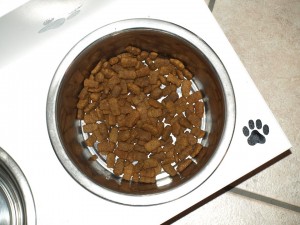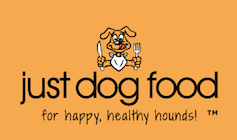Food
Does My Dog Have A Food Allergy?
Having a food allergy is a very common Australian dog owner’s problem, accounting for 10% of all allergies found in Australian dogs and what many loving dog owners don’t realise however, is that there is a distinction between food allergies and a food intolerance and it can really help you and your dog to know the difference.
So, what’s the difference?
The biological difference between an intolerance and an allergy is actually quite simple when you understand just how each works within the body.
Many Australian dog owners look at a bout of vomiting and diarrhea as a sign that their dog is allergic to a component of or the entire recipe making up their food, but alone, this is actually a sign of something different.
Food Allergy
In cases of allergy, the dog will experience an almost immediate immunological response as the antigen enters their body. An antigen is a foreign substance that triggers an immune response. Antibodies and immunoglobulins will form within the blood, to fight against it as soon as contact is made. It’s this fight against the antigen that creates the physical manifestations of food allergies. A little more on this later…
Food Intolerance
While intolerance should be avoided like allergies, they create a different response within the body.
In cases of intolerance, an immunological response isn’t made within your dog’s body and instead what dog owners are dealing with are digestive responses. Digestive responses are made when the dog’s digestive system is unable to break down and absorb a certain ingredient, causing the digestive reactions which are often associated with such hypersensitivities.
Symptoms of Food Allergies In Dogs
While vomiting and diarrhoea are symptoms of food intolerance, chronic bouts coupled with other symptoms could be pointing to allergies. In situations of intolerance, the gastrointestinal symptoms will typically be the only ones experienced as mentyioned, which is not the case if an allergic reaction is present.
If you’re unsure if the gastrointestinal upset is due to a food allergy or intolerance, there will be other signs present to point you in the right direction. Food allergies don’t only cause dogs to have gastrointestinal reactions; the reaction spreads throughout their body as an allergic reaction would to a human. A few of the most common non-gastrointestinal signs of food allergies in dogs are:
- Chronic itching
- Chronic ear infections
- Ear inflammation
- Hot spots
- Itching or irritated paws
- Irritated skin

Unrelated Symptoms and Food Allergies in Dogs
When you read the list of symptoms to a possible food allergy; ‘Irritated skin’ – ‘Chronic ear infections’ – ‘Hot spots’, they all seem pretty unrelated to food, don’t they?
Well, the gastrointestinal symptoms are considered the most common but this is partially due to the direct relation that we make between stomachs and food.
When your dog is sick to his or her stomach, what they ate is naturally the first thing any dog owner would think of.
In the cases of skin or ear reactions, what your dog has eaten isn’t really the first thing you think of and because of this, these other symptoms often go missed for quite some time, and grow serious, as dog owners aren’t suspecting that there could be a link.
Veterinary scientists aren’t settled on one reason as to why food allergies cause such wide ranging and, in some cases, extreme reactions in dogs, but they are aware of ways an owner can go about making sure their dog stays healthy and away from what he or she shouldn’t be having!
Elimination of a Dog Food Allergy
Although dealing with a food allergy can be a case of a process of elimination, a good start is by adopting a Premium or Super Premium dog food diet noting what the ingredients are to help with that process. What Super Premium dog foods have that the cheaper and more common counterparts do not, is healthy protein as the main ingredient, as well as a lack, or the complete elimination, of the same amount of corn, wheat, or soy – 3 very common dog food allergy triggers which are frequently used as ‘fillers’ in cheaper dog food. Organic/Grain Free options can help to ensure that a hypoallergenic diet includes no grain, like corn or wheat, included in the food, and that all components are simple and natural.
Although some specific foods are more common to spark an allergic reaction, like us, your dog may be allergic to any one or a number of food ingredients.
In addition to some of the grains, some of the common ones are:
- Pork
- Rabbit
- Beef
- Chicken
- Fish
- Lamb
- Egg
- Dairy
In conclusion, the single best way to help a dog with food allergies, to feel more comfortable and regain their health is to take away what they’re allergic to; and the best way for you to do that for them is to slowly introduce and eventually switch them on to a Premium or even better, a Super Premium dog food diet. Super Premium dog foods use a limited and superior ingredient list you can trust. This makes it easy to find a food that will mesh with your dog’s internal chemistry and therefore your dog is less likely to cause new allergies from popping up with their lack of fillers and additives!
Dog food allergies are no fun for Australian dog parents or their dogs. Thankfully, there is a variety of options of dog food available with ingredients less likely to cause distress to you and your dog. To view your options of Premium and Super Premium dog foods, simply visit Just Dog Food here.
